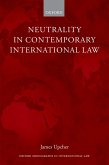

10,95 €
Sofort per Download lieferbar
Ähnliche Artikel




27,95 €
Sofort per Download lieferbar

21,95 €
Sofort per Download lieferbar
eBook, PDF
8. November 2024
Taylor & Francis eBooks

Searching for a Strategy for the European Union's Area of Freedom, Security and Justice (eBook, PDF)
eBook, PDF
26. Juli 2018
Taylor & Francis eBooks

eBook, PDF
25. Januar 2012
Taylor & Francis eBooks


20,95 €
Sofort per Download lieferbar

Ähnlichkeitssuche: Fact®Finder von OMIKRON
